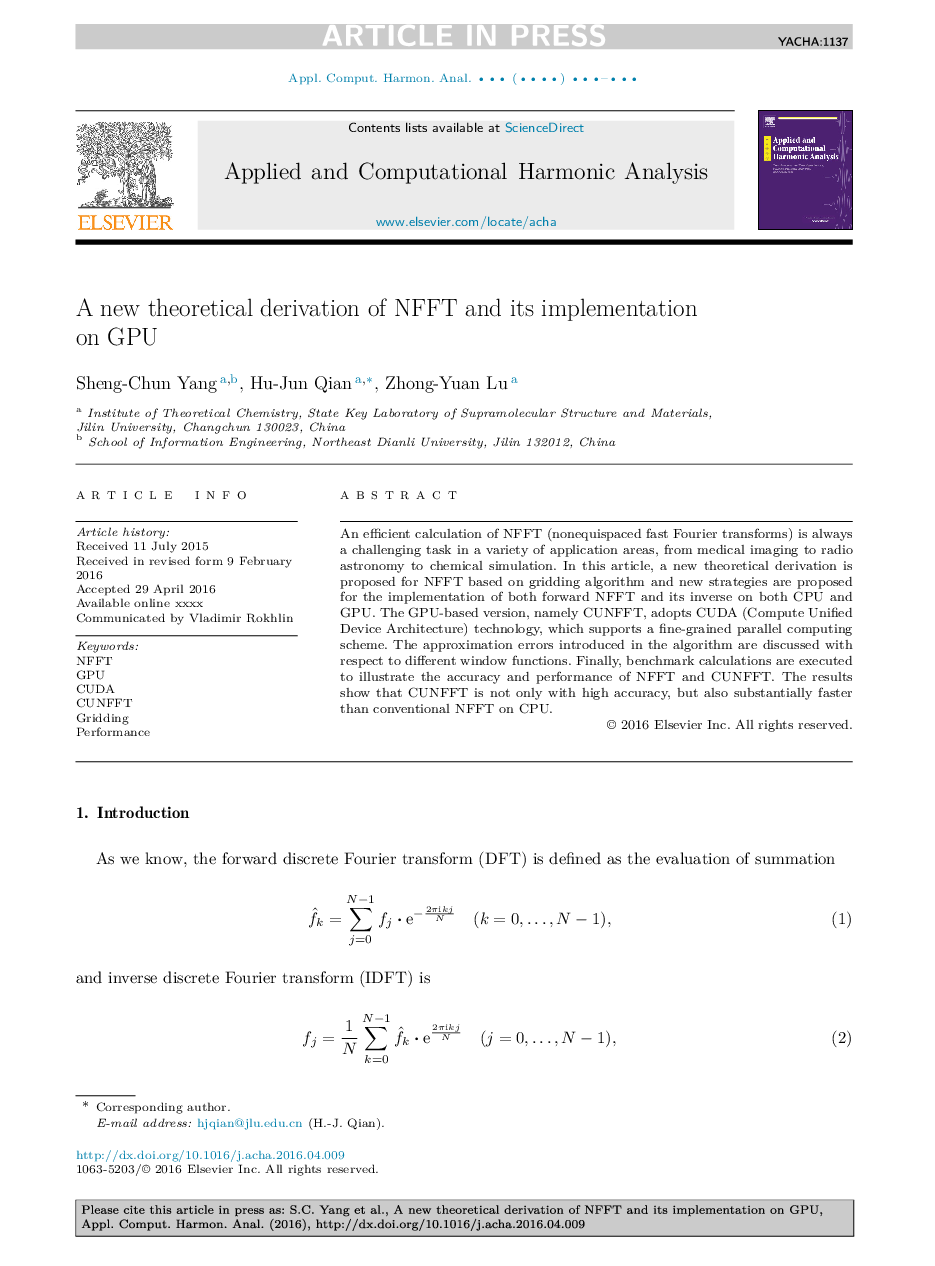| Article ID | Journal | Published Year | Pages | File Type |
|---|---|---|---|---|
| 8898233 | Applied and Computational Harmonic Analysis | 2018 | 21 Pages |
Abstract
An efficient calculation of NFFT (nonequispaced fast Fourier transforms) is always a challenging task in a variety of application areas, from medical imaging to radio astronomy to chemical simulation. In this article, a new theoretical derivation is proposed for NFFT based on gridding algorithm and new strategies are proposed for the implementation of both forward NFFT and its inverse on both CPU and GPU. The GPU-based version, namely CUNFFT, adopts CUDA (Compute Unified Device Architecture) technology, which supports a fine-grained parallel computing scheme. The approximation errors introduced in the algorithm are discussed with respect to different window functions. Finally, benchmark calculations are executed to illustrate the accuracy and performance of NFFT and CUNFFT. The results show that CUNFFT is not only with high accuracy, but also substantially faster than conventional NFFT on CPU.
Keywords
Related Topics
Physical Sciences and Engineering
Mathematics
Analysis
Authors
Sheng-Chun Yang, Hu-Jun Qian, Zhong-Yuan Lu,
